
Covington went through many changes over the second half of the 20th century due to technology, yet what remained constant is the small town warmth the village has been known for since it was incorporated in 1835.
One of the biggest changes for the Village of Covington was the transformation in the power supply from the historic Greenville Falls site located west of town. As the 1950s began power to Covington and the neighboring village of Pleasant Hill was supplied at the site through a power plant run by the village. Farmers who resided along the path of the power supply were fortunate to be able to also utilize the service.

Soon, the Dayton Power & Light company took over the power plant and erected an entirely new system that would not only supply village residents with power, but reach the entire rural area in the farming community. This eliminated the need of the dam and the old, outdated power plant. The old power plant was located at the east of Greenville Falls and the dam was located at the west of Greenville Falls. The dam, when it was in use, provided an excellent recreational area for local residents to fish and ice skate. These structures were left to suffer the affects of time and serve as monuments to the initial growth of Covington over the previous century.
The Village of Covington also purchased the property at 1 South High Street in Covington from The Dayton Power and Light Company in May of 1975. The facility was remodeled and expanded to accommodate the administrative staff, government officials and the Covington Police Department.

Also changing over the second half of the 20th century was the evolution of Covington Exempted Village Schools. In the mid 1950s Covington Elementary School was built and in 1956 saw its first classes. This new school housed the elementary and middle school students – eliminating the need for the 1897 school building at Wright and Wall streets, which was demolished.
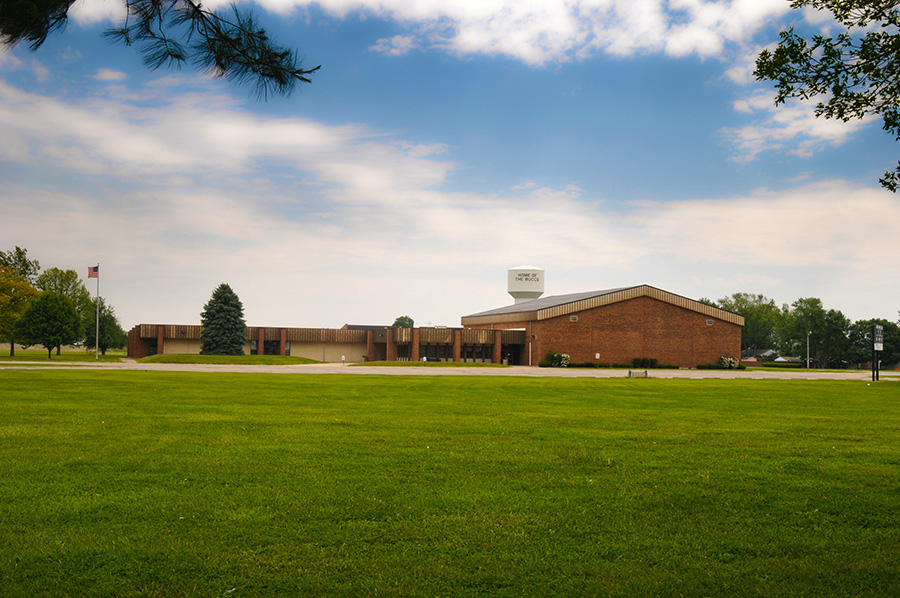
Expansion was needed in 1974, which resulted in the construction of a new high school on Chestnut Street east of the Elementary School. Middle School students were then moved from the Elementary School located on Chestnut Street to the old High School building on Grant Street producing the building layout for the school system that existed from 1974 to 2016.
POLICE DEPARTMENT
The decade of the 1950s began with stability in the Covington Police Department with Jim Rice conducting the duties as the Police Chief from 1948 to 1960. Prior to Rice, there was no known Marshal since Frank O’Roark previously held the position in 1941.
The stability established by Jim Rice continued throughout the rest of the century with six more individuals holding the position of Police Chief; Norman Miller (1960-1977), Bill Ray (1977-1979), Pat Thomas (1979-1980), Norman Swartz (1980-1987), Larry Earick (1987-1994) and Rick Wright (1994-2002).
J.R. CLARKE PUBLIC LIBRARY
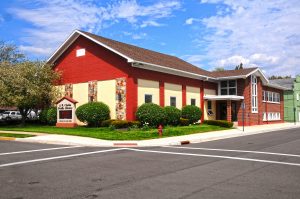 The J. R. Clarke Public Library of Covington was first known as the Covington-Newberry Township School and Public Library. It was organized in 1917. Its first location was in the Newberry Township building located on the corner of Wright and Pearl Streets in Covington. Outgrowing these quarters, the Covington Board of Education designated a room in the elementary school building for the library. The library remained in this building until 1950. In 1940, a branch of the library was placed in the high school study hall for the convenience of the students.
The J. R. Clarke Public Library of Covington was first known as the Covington-Newberry Township School and Public Library. It was organized in 1917. Its first location was in the Newberry Township building located on the corner of Wright and Pearl Streets in Covington. Outgrowing these quarters, the Covington Board of Education designated a room in the elementary school building for the library. The library remained in this building until 1950. In 1940, a branch of the library was placed in the high school study hall for the convenience of the students.
In 1950, the library moved to 212 Walnut Street, Covington. This location was made available by Mr. and Mrs. J. R. Clarke, former Covington residents. Mr. Clarke was a former state librarian. After extensive remodeling, it was named the J. R. Clarke Public Library and was dedicated in 1950.
With the continued growth of the library, the site of the Grace Brethren Church became the next location for the library. This building, located on the corner of Pearl and Spring Streets, opened its doors to the public in February, 1981.
KOREAN WAR
The Korean War was a product of the Cold War between the Soviet Union and the United State as Korea split into two sovereign state. The war began on June 25, 1950 and lasted until July 23, 1953 with the United States suffering 33,686 battle deaths and 2,830 non-battle deaths. (Source: https://en.wikipedia.org/wiki/Korean_War)
Korean War Casualties from Covington
Army SGT Paul Edward Stephan was killed in action on September 28, 1951 in the Chorion Area battled zone in North Korea. Sergeant Stephan was a member of the 7th Infantry Regiment, 3rd Infantry Division. He is buried in Harris Creek Cemetery in Bradford, Ohio.
VIETNAM WAR
The Vietnam War, also known as the Second Indochina War, and in Vietnam as the Resistance War Against America or simply the American War, was a conflict that occurred in Vietnam, Laos, and Cambodia from 1 November 1955 to the fall of Saigon on 30 April 1975. By war’s end, 58,220 American soldiers had been killed, more than 150,000 had been wounded, and at least 21,000 had been permanently disabled. The average age of the U.S. troops killed in Vietnam was 23.11 years. (Source: https://en.wikipedia.org/wiki/Vietnam_War)
Vietnam War Casualties from Covington
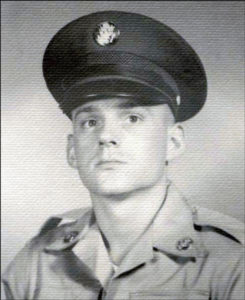 Army CPL Dale Earnest Badgley was killed by hostile fire on June 3, 1968 in Ding Tuong, South Vietnam. He was born on July 31, 1947 and was a 1966 graduate of Covington High School.
Army CPL Dale Earnest Badgley was killed by hostile fire on June 3, 1968 in Ding Tuong, South Vietnam. He was born on July 31, 1947 and was a 1966 graduate of Covington High School.
(Source: www.vvmf.org)
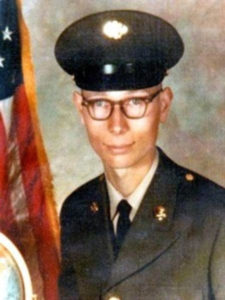 Army SGT William Lester Wilhelm died on September 6, 1970 in Bien Hoa, South Vietnam due to wounds from hostile fire. Wilhelm was born on September 1, 1948 and was a 1966 graduate of Covington High School.
Army SGT William Lester Wilhelm died on September 6, 1970 in Bien Hoa, South Vietnam due to wounds from hostile fire. Wilhelm was born on September 1, 1948 and was a 1966 graduate of Covington High School.
(Source: www.vvmf.org)
ELEPHANTS ON THE LOOSE…
On June 9, 1982, four elephants escaped from the Circus in Covington, Ohio after one elephant backed into an electric line. Two of the elephants ran east on 36 to the edge of town and proceeded up the lane on Roger Clark’s farm – through a field to a pasture shared by cattle. They then ran by Roger Clark, who was sitting on the fence by his barn, and proceeded west to Ingle Rd. past Highland Cemetery. They crossed 48 and went into a pond at the edge of town, which is where they were captured. The other two elephants got on the railroad tracks and headed west, crossing over 48 on the overpass in town. They were found and captured on the west side of Covington.
END OF AN ERA…
The railroad, which was built through Miami County in 1859, closed operations in December of 1983 and the tower located in neighboring Bradford, Ohio was closed on January 3, 1984 – ending the railroad era in Covington. Some of the land where the railroad existed to the west of Route 48 was eventually plotted off and sold. Much of the land to the east of Route 48 was turned into bike path as part of the Miami Valley Bikeways.
VOGLER BROTHERS

Tim and Terry Vogler were the most successful athletes to ever come out of Covington. They were members of the 1973 State Championship team that finished the season unbeaten. Coached by Larrie Tisdale, the ’73 team only allowed two teams to score points on them in ten games and a total of 24 points all season, a record which stands today.
The Voglers were also a part of the 1974 team that finished 9-1. They finished their high school careers with a 19-1 record over their junior and senior seasons.
Both Tim and Terry went on to play college football at Ohio State for legendary coach Woody Hayes.
Tim was one of the Buckeyes’ team captains his senior season. That same season at OSU they helped lead the Buckeyes to a 7-4 record and a visit to the Gator Bowl against Clemson. That was the infamous game known as “The Punch” where Woody Hayes punched a Clemson player on the Buckeyes’ sideline, ending his historic coaching career.

In 1979, Tim was acquired by the Buffalo Bills of the NFL as an undrafted free agent. He played ten seasons, appearing in 117 games for the Bills at nearly every offensive line position throughout his career.
Tim played with such football greats as Joe Cribbs, Jim Kelly, and Bruce Smith. He was coached by Pro Football Hall of Famers Marv Levy and Jim Ringo. Ringo was a dominating force for the Green Bay Packers under coach Vince Lombardi back in the early 60’s.
The legacy the Vogler Brothers left at Covington still exists today. The kids who play on the same field know quite well about the Voglers.
Some of the memorabilia from their playing days are displayed in the trophy case which is a constant reminder of what these two players mean to the town of Covington.
Tim’s Buffalo Bills helmet also is a reminder that even a kid from a small town can make it to the big time.
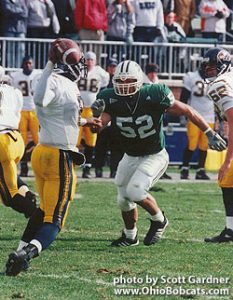 Matt Weikert, a 1997 Covington graduate, walked on at Ohio University and put together an impressive collegiate career with the Bobcats.
Matt Weikert, a 1997 Covington graduate, walked on at Ohio University and put together an impressive collegiate career with the Bobcats.
At 6-3 and 230 pounds, he excelled as an outside linebacker where he was named second team All-MAC his junior season. He was a dominant player his senior season as well, recording 57 total tackles, 37 solo tackles, 5 tackles for a loss and 2 sacks his senior season and played in all 11 games. He had a season high 12 tackles against Bowling Green.
After his collegiate career, Weikert received an opportunity to try out for the Indianapolis Colts and enjoyed a long coaching career in the collegiate ranks.
The People Next Door TV Series
Covington, Ohio was the setting for the 1989 sitcom “The People Next Door” featuring Jeffrey Duncan Jones, famously known for his role as Edward R. Rooney in Ferris Bueller’s Day Off (1986) and Charles Deetz in Beetlejuice (1988). Video: https://www.youtube.com/watch?v=K7JZHIfJ2L4
In the series, Jones was regarded as a character actor, cartoonist Walter Kellogg – a man whose imagination was so vidid that many of the things he imagined materialized immediately. His wife Abigail was portrayed by Mary Gross. They had two children, 14-year-old Matthew and 11-year-old Aurora. Abigail’s sister “Cissy” (Christina Pickles) was also a regular, as was meddlesome mailman Truman Fipps (Leslie Jordan). The character of Debbie was played by Jackie Swanson.
The series proved to be a Nielsen ratings disaster and was cancelled after five episodes had aired. Despite this, the show has gained a cult following from Nostalgia TV and Wes Craven fans.
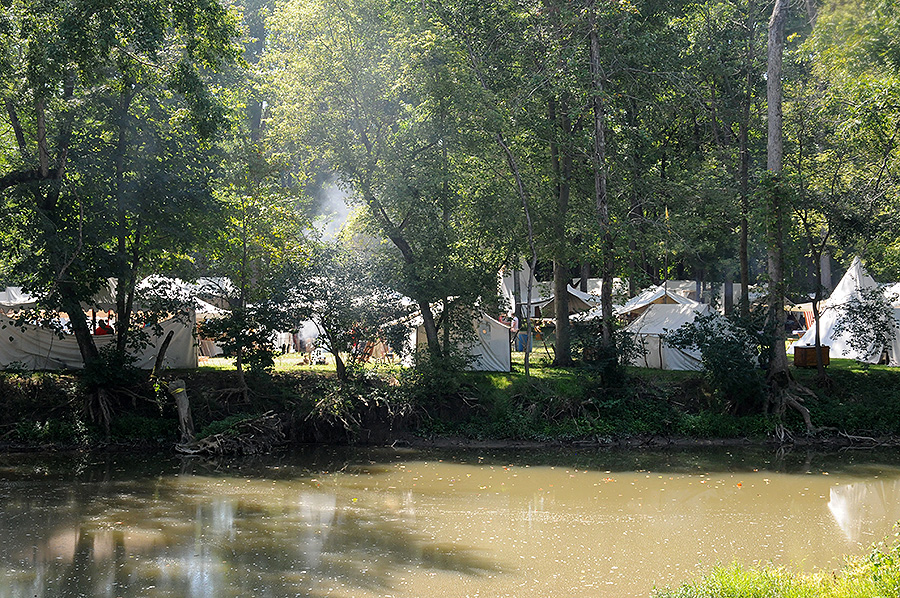
FORT ROWDY GATHERING
In 1992, sparked by the leadership of the Fort Rowdy Museum, the first Fort Rowdy Gathering took place at the Covington Community Park to celebrate the village’s origin as a fort of that name, built by the forces of Mad Anthony Wayne during the Northwest Indian War.
COVINGTON LANES BURNS TO THE GROUND
On December 6, 1999, Covington Lanes was destroyed by fire. The bowling alley was located on Broadway St. in Covington between Debra St. and Larry St.
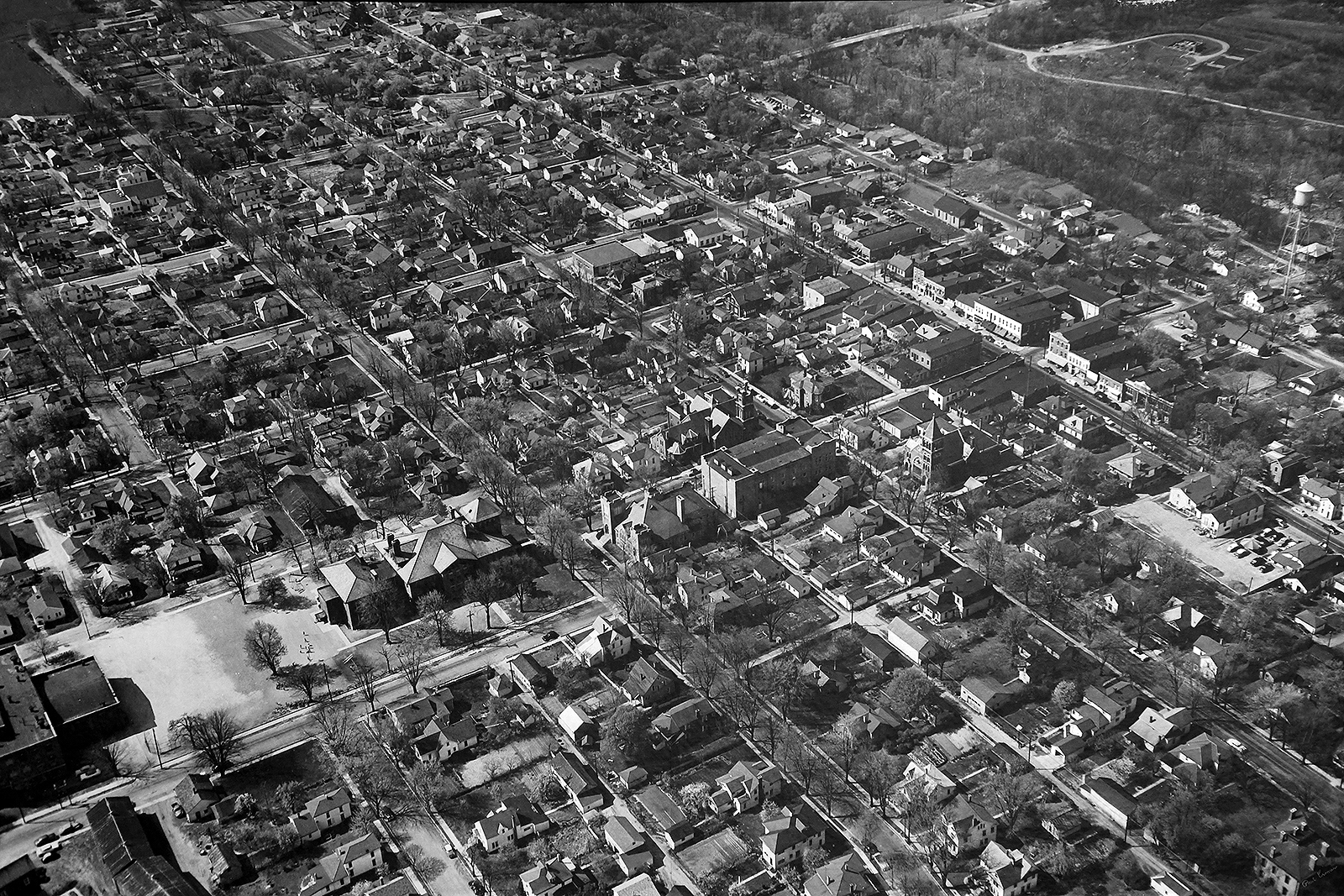
POPULATION
In 1950, the population in the Village of Covington was 2,172 and over the next three decades the population steadily increased to 2,473 in 1960, 2,575 in 1970 and 2,610 in 1980. The population decline by -0.3% in 1990 with 2,603 residents.
As of the census of 2000, there were 2,559 people, 1,011 households, and 702 families residing in the village. There were 1,011 households out of which 30.6% had children under the age of 18 living with them, 56.2% were married couples living together, 9.7% had a female householder with no husband present, and 30.5% were non-families. 26.5% of all households were made up of individuals and 12.9% had someone living alone who was 65 years of age or older. The median income for a household in the village was $41,042, and the median income for a family was $44,924. (Source: https://en.wikipedia.org/)
VILLAGE GOVERNMENT (1949-2000):
1949 – J.D. Huffman (Mayor)
Councilmen: Howard M. Giffin, Lester J. George, S. George Rudy, Russell K. Johnston, J. Lewis O’Roark, Jacob Reichman
1951 – J.D. Huffman (Mayor)
Councilmen: Russell K. Johnston, J. Lewis O’Roark, Dan Spencer, John Thompson, Fred Roberts, Roger Draher. Roger Draher resigned and was replaced by George Draher.
1952 – J.D. Huffman (Mayor)
Councilmen: Russell K. Johnston, J. Lewis O’Roark, Dan Spencer, John Thompson, Fred Roberts, George Draher. Mary W. Hayes (Clerk)
1954 – J.D. Huffman (Mayor)
Councilmen: Russell K. Johnston, J. Lewis O’Roark, Dan Spencer, John Thompson, Fred Roberts, George Draher. Mary W. Hayes (Clerk). Dan Spencer resigned in July, 1954 and was replaced by Ray Porter Jr.
1956 – Ned Drees (Mayor)
Councilmen: Howard Giffin, Russell K. Johnston, Ray Porter Jr., Charles Ingle, J. Lewis O’Roark, Fred Roberts. Fred Roberts resigned in June 1956 and was replaced by Herbert Rhoades. Mary W. Hayes (Clerk).
1958 – Ned Drees (Mayor)
Councilmen: Roy Weikert, Keith Langston, Ray Porter Jr., James C. Kinney, Charles Ingle, J. Lewis O’Roark. Mary W. Hayes (Clerk).
1960 – Ned Drees (Mayor)
Councilmen: Merrit J. Burk, Keith Langston, Charles Ingle, James C. Kinney, J. Lewis O’Roark, Ray Porter Jr., Mary W. Hayes (Clerk). Mary W. Hayes resigned as Clerk in January 1961 and was replaced by Doris Frantz.
1962 – Ralph E. Boggs (Mayor)
Councilmen: Robert K. Higgins, Robert Rudy, James C. Kinney, Merrit J. Burk, Ray Porter Jr., Keith Langston. Doretha F. Manning (Clerk). Merrit J. Burk resigned and was replaced by Russell K. Johnson.
1964 – Herbert B. Edwards (Mayor)
Councilmen: Robert Paff, Charles Ingle, Cecil R. Crawford, Ray Porter, Russell K. Johnson, Keith Langston. Doretha F. Manning (Clerk).
1966 – Herbert B. Edwards (Mayor)
Councilmen: Robert S. Gearhardt, Robert Paff, Charles Ingle, Cecil R. Crawford, S. George Rudy, Ned Drees. Doretha F. Manning (Clerk).
1968 – Herbert B. Edwards (Mayor)
Councilmen: Robert S. Gearhardt, Robert Tucker, Cecil R. Crawford, S. George Rudy, Ned Drees, Bernis Brooks. Betty Finfrock (Clerk).
1970 – S. George Rudy (Mayor)
Council: Robert S. Gearhardt, Robert Tucker, Cecil R. Crawford, J. Lewis O’Roark, Thomas J. Carder, Bernis Brooks. Judith K. Carder (Clerk).
1972 – S. George Rudy (Mayor)
Council: Robert S. Gearhardt, Robert Tucker, Cecil R. Crawford, J. Lewis O’Roark, Thomas J. Carder, Bernis Brooks. Judith K. Carder (Clerk). Thomas J. Carder and Judith K. Carder resigned their offices and are moving out of corporation – replaced by Jeff Negley and Kay E. Thomas.
1974 – S. George Rudy (Mayor)
Council: Elfreda Treon, Robert S. Gearhardt, Robert Tucker, Norman Bentz, J. Lewis O’Roark, Bernis Brooks. Kay E. Thomas (Clerk). J. Lewis O’Roark died on August 25, 1975 and was replaced by Hugh Hill.
1976 – Donald E. Garman (Mayor)
Council: Lewis Dewey, Jerry Besecker, Robert S. Gearhardt, Hugh Hill, Elfreda Treon, Norman Bentz. Kay E. McKinney (Clerk). Kay E. McKinney resigned resigned and was replaced by Alice McCool.
1978 – Donald E. Garman (Mayor)
Council: Lewis Dewey, Jerry Besecker, Elfreda Treon, Richard Angle, William A. Wooddell, Paul Kenworthy. Alice McCool (Clerk). Clerk, Alice McCool resigned and was replaced by Judy Brinkmann in April 1979. Mayor Garman resigned on January 23, 1978 and was replaced by Council President Elfreda Treon. Mayor Elfreda Treon resigned and returned to council seat after Dick Angle was voted Council President and upon Treon’s resignation became Mayor.
1980 – Donald E. Garman (Mayor)
Council: Luther J. Landis Jr., Fritz Treon, John Schwamberger, Everett Phillips, William A. Wooddell, Paul Kenworthy. Judy Brinkman (Clerk). Paul Kenworthy resigned and was replaced by Lewis Dewey.
1982 – Donald E. Garman (Mayor)
Council: Robert S. Gearhardt, Donna K. Dewey, William A. Wooddell, John Walker, Luther J. Landis Jr., John Schwamberger. Judy Brinkman (Clerk).
1986 – Donald E. Garman (Mayor)
Council: Robert Hunt, Donna K. Dewey, William A. Wooddell, Mark A. Beaver, John Walker, Luther J. Landis Jr. Kay McKinney (Clerk).
1988 – Mark A. Beaver (Mayor)
Council: Robert Hunt, Donna K. Dewey, Louis A. Apswich, Luther J. Landis Jr., Clifford Stocker, Melvin C. Longendelpher. Kay McKinney (Clerk). Mayor Beaver resigned on June 18, 1988 and was replaced by Melvin C. Longendelpher.
1990 – Lawrence A. Polhamus (Mayor)
Council: Donna K. Dewey, Luther J. Landis Jr., William R. McKinney, Rex A. Millhouse, Robert Hunt, Louis A. Apswich. Kay McKinney (Clerk)
1992 – Melvin C. Longendelpher (Mayor)
Council: Luther J. Landis, William R. McKinney, Donna K. Dewey, William R. McKinney, Rex A. Millhouse, Robert S. Gearhardt, Louis A. Apswich. Kay McKinney (Clerk).
1994 – Melvin C. Longendelpher (Mayor)
Council: Donna K. Dewey, Jerry G. Longendelpher, Robert S. Gearhardt, Louis A. Apswich. Kay McKinney (Clerk). The two vacant seats were filled by Lowell F. Yingst and Richard A. Rice.
1996 – Lowell Yingst (Mayor)
Council: Donna K. Dewey, Jerry G. Longendelpher, Richard A. Rice, Robert Cron. Kay McKinney (Clerk). The two vacant seats were filled by Larry Scott and Chris Harshbarger.
1998 – Lowell Yingst (Mayor)
Council: Larry Scott, R. Scott Tobias, David Beeman, Steve Heffner, Donna K. Dewey, Robert Cron. Kay McKinney (Clerk).
2000 – Lowell Yingst (Mayor)
Council: Marc Bayse, Robert Cron, R. Scott Tobias, David Beeman, Dick Rise, Donna K. Dewey. Kay McKinney (Clerk).
